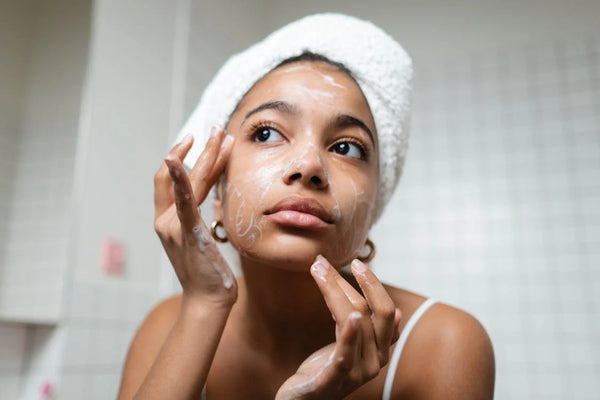
You’ve likely heard the term before, but what exactly is a hydrosol? Better yet, what are they used for?
In short, a hydrosol is aroma-therapeutic water which is produced during the process of distillation of specific plant material to obtain essential oil. The water was once considered merely the carrier to obtain the oil and discarded. It was soon discovered to contain a similar chemical composition and therapeutic properties as the essential oil. Hydrosols also contain additional phyto-compounds that are only soluble in water, enhancing its benefits.
Hydrosols are truly unique. They are natural and pure, made in a plant, not a factory. They contain the very fluids that flowed through the plant. The aroma-therapeutic properties of botanical essential oils have been established for millennia, and hydrosols provide benefits similar to the essential oil of its source plant, but in a milder form. They deliver a host of health and beauty benefits, with the addition of connecting to one’s inner spirit.
The most common method is steam distillation. To obtain an essential oil, water is heated to the point of producing steam slowly, which then travels through a mass of a single type of plant material (flowers, roots, bark, stems, needles, or leaves) from a botanically specific plant.
As the steam flows through the plant material, the cells release their oils and water soluble components. The oil and nutrient rich steam cools, the condensate is collected, and since water and oil do not mix, oil floats on the surface of the condensed water and is separated from the solution. This oil becomes a specific essential oil. The remaining condensate becomes the hydrosol.
Hydrosols are also referred to as hydrolats or distillate waters or even floral waters if the plant material is a floral such as lavender or rose. The latter term though should be avoided as flower waters are usually not true hydrosols, but water to which either a fragrance (natural or synthetic) or oil has been added.

Hydrosols have similar properties to essential oils, however, they are gentler and better tolerated because they’ve been diluted during the distillation process and carry only subtle traces of the oils.Unlike most essential oils, hydrosols are safe when applied neat to bare skin and are not likely to cause irritation, even on sensitive skin. Most hydrosols are safe for children, pregnant women, and pets.
It should be noted that since hydrosols contain components of the plant material that may not otherwise be present in essential oils, the scent may vary compared to its oil, and both may vary from harvest to harvest. Hydrosols and essential oil components can differ based on geography and environmental factors, which can alter smell, taste, and chemical composition.
Hydrosols tend to degrade faster than essential oils, making the average shelf life shorter (18-24 months), depending on the botanical source of the hydrosol. To maintain a hydrosol’s properties, store away from sunlight in a cool, dry place, including refrigeration.
While hydrosols have widespread applications for home and health care, here are some of the most common uses:
Abbey St Clare offers an array of organic hydrosols in delightful scents – each containing its own unique therapeutic benefits for bringing balance to the mind, body, and spirit.

Orange Blossom (Neroli) Hydrosol, (Citrus aurantium var amara), provides a refreshing citrus-floral profile. Emotionally, it calms the mind and provides an overall sense of well-being. It makes an excellent tantrum-buster for children and has been shown to be effective for ADHD. Simply spritz a generous amount on your face or apply using a hydrosol dampened cloth.
If you’re prone to breakouts or oily skin, Orange Blossom or Lemongrass hydrosols contain antibacterial and astringent properties that purify the skin and control excess oil, without leaving your skin parched.
Spray a few pumps on your face and neck throughout the day to cut down on oil slicks or apply after cleansing your skin to wipe away impurities.
Lavender (Lavandula angustifolia) and Roman Chamomile Anthemis nobilis) hydrosols are renowned for their powerful calming properties that help you drift into a restful sleep when used as a linen or pillow spray. Roman Chamomile is especially soothing for diaper rash, safe and natural for baby.
Both hydrosols provide relief from sunburn when sprayed directly on distressed skin and work beautifully when combined. Alternately, place a hydrosol soaked compress on the burned area for rapid relief.
Mint3 Hydrosol offers a gentle burst of coolness to beat the summer heat with a trio of these certified organic mint varieties: Spearmint (Mentha spicata), Peppermint (Mentha piperita), and Bergamot (Monarda fistulosa and Monarda didyma).
Spray anywhere on your body or combine with our Rose Geranium Hydrosol for extra relief from heat-induced fatigue. Refrigerate for extra cooling relief.
For pesky bug bites, burns, or rashes, Yarrow Hydrosol (Achillea millefolium) is a natural anti-inflammatory that can put an end to nagging itchiness or pain. It’s also recommended for soothing hot spots on pets and quelling nervous tendencies. Massage into the affected area using clockwise circles, add to a sitz bath, or apply as a compress.
To browse our full collection of pure, organic hydrosols, here is our collection of hydrosols.
Reference: Hydrosols: The Next Aromatherapy Book by Suzanne Catty.
Comments will be approved before showing up.


